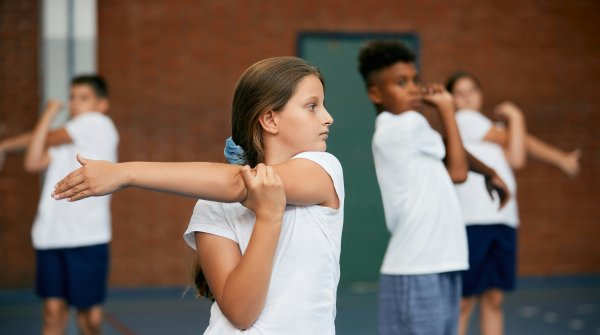We have fond memories of the European Championships in August 2022, when Gina Lückenkemper sprinted to the European title in 10.99 seconds. Anyone who was there in Munich's Olympic Stadium back then can count themselves lucky. It was a special experience and a phenomenal run by the German athletics queen. In the last eight strides, Lückenkemper made up a good 1.5 meters on Mujinga Kambundji from Switzerland, who had been in the lead until then, and finally overtook her in a photo finish. In front of her home crowd, Gina Lückenkemper delivered to the point and showed nerves of steel. However, what colloquially means a mental state of mind can also be interpreted differently in the 26-year-old's case. Gina has been practicing for many years neuroathleticstaught to her by Lars Lienhard.
Sports scientist Lienhard has been intensively studying the connections and interactions between the brain and movement for over ten years. The result is a specific form of brain and nerve training. He calls it neuroathletics. Lienhard is considered a pioneer in this field in Germany. More and more athletes are putting their trust in him, including tennis ace Alexander Zverev, footballer Serge Gnabry and Gina Lückenkemper.
Neuroathletics originated in the USA. The topic has been on the agenda there for several decades. Dr. Eric Cobb really got the ball rolling there in the early 2000s. The US chiropractor was the first to integrate the findings of functional neurology into traditional athletics training and thus develop new training methods. Numerous US athletes trusted his method from then on. NBA star LeBron James also had a neuro-doc at his side during his time with the Miami Heat (2010-2014). Eric Cobb also passes on his knowledge in training courses; one of his first students was Lars Lienhard. "According to classical movement theory, strength is a physical attribute and its central nervous control only plays a subordinate role. But that's not true, because muscles only execute the movement patterns that the brain tells them to," says Lienhard. This is why the central content of neuroathletics lies in looking at the brain. The approach: how can the brain's control system be specifically changed or influenced - for example, by providing sufficient high-quality information from the sensory organs? Lienhard wants to know where the problem lies in the brain's "software" and what an individual update might look like. But does it really work?
He firmly believes that neuroathletic training could be a real game changer, as it offers a new approach to overcoming deadlocked plateaus in elite sport. Attempts are often made to break through the plateau by changing training methods such as strength training. However, sometimes it is enough to activate the brain with targeted sensory information in order to make progress again. This can lead to previously blocked motor processes being triggered in the brain, making movement easier and more efficient. The key here is improving blood flow in the brain, which leads to the brain being able to better adapt and optimize movement - and this is often the turning point that can bring about a real breakthrough in training.
At the German Sport University Cologne, Dr. Vera Abeln is researching how exercise affects the brain at the Institute for Movement and Neuroscience. In her research, Dr. Abeln is primarily interested in how exercise can be used to positively influence the brain. The negative influences on our brain due to a lack of exercise are also aspects of her research. "The brain is very smart. When something is used more or becomes more important, our brain adapts in the long term. Plastic changes then lead to processes running more economically or effectively," says the sports scientist. Nerves can also be trained. "New nerve cells or neuronal connections between cells can be created, known as neurogenesis. The transmission speed or quantity of messenger substances that transmit signals can also be optimized through frequent training," says Dr. Abeln.
Lienhard describes exactly what an exercise for neuroatheltics training can look like as follows: 'Training often deviates from the typical idea that many have of athletic training, as it focuses on activating the senses rather than classic physical movement sequences. In neuro-centered training, exercises are developed that are based on sensory perceptions from the outside world, the body and internal processes. The exercises can therefore sometimes look a little strange as, for example, joints are stretched or rotated while the head is held in a certain direction. The aim is to activate various sensory organs, such as the balance system or the eyes.
When asked whether neuroathletics is only applicable to certain sports, Lienhard explains that this is by no means the case. He emphasizes that neuroathletics deals with how the brain regulates and optimizes movement, regardless of the type of sport. This is because in the various disciplines of the Olympic Games as well as in soccer, movement is always regulated by the brain and transferred to the body. Neuroathletics is now growing steadily and is already firmly established in many sports.
Former professional footballer Jan-Ingwer Callsen-Bracker has experienced this first-hand. The central defender was the first to practice neuroathletics in the Bundesliga. After team training, he regularly put in an extra session at FC Augsburg. Eye training, balance training, nerve stretching. At first, his teammates were very skeptical and rolled their eyes. Later, more and more of them rolled their eyes along with Callsen-Bracker. "I had compensation patterns for a long time after an injury at the start of my career, which led to recurring muscular problems. The contact with neuro-focused training was a turning point for me. It made me stronger, more flexible and pain-free. My performance has improved significantly due to my increased quality of movement," says Callsen-Bracker. After his active career, Callsen-Bracker immersed himself completely in the subject and continued his education in the field of neuroathletics. He now oversees the field as an expert for the German Football Association, advising and training the German national A and U teams.
Neuroathletic training draws on information from various fields such as sports science, psychology and neurology. It focuses particularly on sensorimotor function, i.e. how sensory information controls motor processes. A large part of the work is based on applied movement neurology, which provides new insights into how the brain connects movement and which aspects can be utilized. These disciplines make it possible to design training in a targeted manner and to expand our understanding of motor development and the acquisition of movements, explains Lienhard.
However, it is difficult to measure and evaluate results and progress through neuroathletics. There are virtually no studies available. One reason for this is that the term coined by Lienhard is still relatively new. On the other hand, there are aspects of neuroathletics that already exist in other forms of training or are used under other terms such as consciousness control, visual attention or anticipation skills. Dr. Vera Abeln knows why research in this area is lagging so far behind: "In order to be able to make really valid statements about the effects of neuroathletics, you would have to look at the processes that cause changes in the brain during a movement. This is practically impossible with an MRI due to movement artifacts during sport, and only possible to a very limited extent with EEG. In addition, the methodology requires a large number of repetitions under almost identical conditions. Taken together, these are the reasons why there is currently almost no valid data available. However, the fact is that every intensive exercise also leads to plastic changes in the brain and processes are optimized. Therefore, there is nothing fundamentally wrong with this concept." So the question of what demonstrable effects neuroathletics has on athletes cannot - yet - be answered.
Neuroathletics is being used more and more in rehabilitation and therapy. In professional sport, it is often about fine-tuning, getting that little bit "more" performance, providing new impetus or alleviating pain and problems caused by injuries. As long as more and more top athletes are reporting positive effects and more and more associations and clubs are opening up to neuroathletics, Lars Lienhard does not seem to be wrong with his concept. However, it is also clear that neuroathletics requires an individual anamnesis and a specific recommendation. It is not off-the-shelf training; experts and intensive, continuous 1:1 support are essential.
Finally, Lienhard adds that neuroathletic training is all about each trainer having their own approach. This means that two trainers can achieve different results - just like in strength training. The quality of the information you get plays a huge part in this, especially in a field that is developing so quickly. It's important to know the market and understand what works and what doesn't.
- ISPO awards
- Mountain sports
- Bike
- Design
- Retail
- Fitness
- Health
- ISPO Job Market
- ISPO Munich
- ISPO Shanghai
- Running
- Brands
- Sustainability
- Olympia
- OutDoor
- Promotion
- Sports Business
- ISPO Textrends
- Triathlon
- Water sports
- Winter sports
- eSports
- SportsTech
- OutDoor by ISPO
- Heroes
- Transformation
- Sport Fashion
- Urban Culture
- Challenges of a CEO
- Trade fairs
- Sports
- Find the Balance
- Product reviews
- Newsletter Exclusive Area
- Magazine






